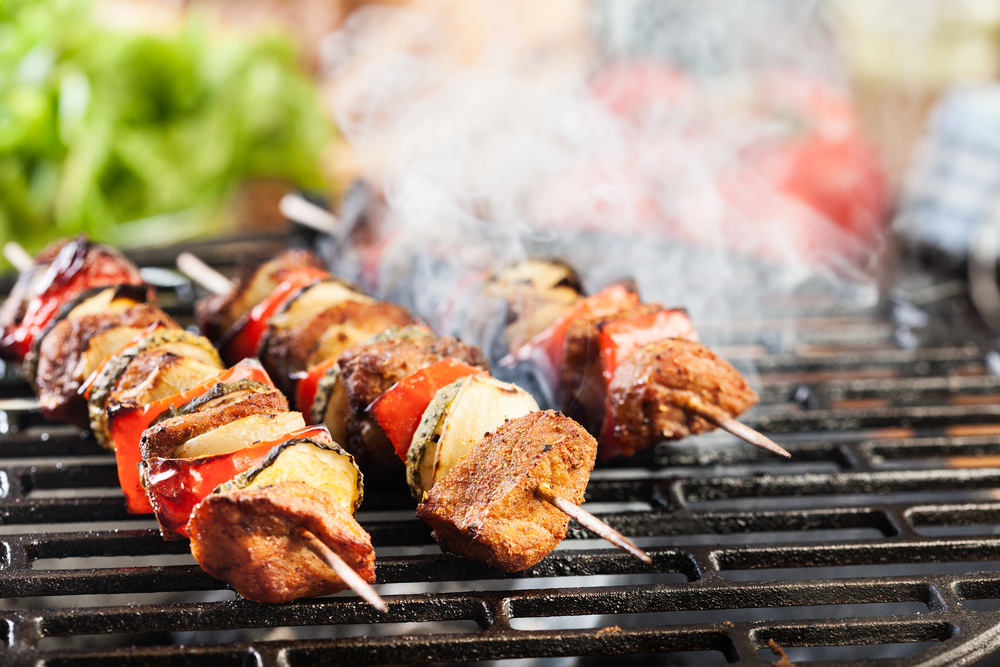Grill Masterclass: The Ultimate Guide to Achieving BBQ Perfection
Introduction
Grilling is not just a cooking method; it’s a culinary experience that brings people together. Whether it’s a casual weekend BBQ or a grand holiday feast, grilling is often the centerpiece of memorable gatherings. However, achieving that perfect sear or mouthwatering smokiness can be challenging. This ultimate guide aims to transform you into a grill master, armed with expert tips and tricks for BBQ perfection.
The Right Tools: Your Grilling Arsenal
Choosing the Perfect Grill
The grill you choose sets the stage for your grilling adventures. Here’s a breakdown of the most popular types:
- Charcoal Grills: Offer a smoky flavor but require time to heat up.
- Gas Grills: Quick and convenient but may lack the authentic smoky taste.
- Electric Grills: Ideal for indoor grilling but generally less powerful.
- Pellet Grills: Use wood pellets for a unique flavor profile and offer precise temperature control.
Must-Have Accessories
- Grill Tongs: Opt for tongs with a good grip and sufficient length to keep your hands away from the heat.
- Grill Brush: Choose a brush with sturdy bristles for effective cleaning.
- Meat Thermometer: Invest in a high-quality digital thermometer for accurate readings.
- Grill Basket: Ideal for grilling vegetables, seafood, and other small items.
- Grill Gloves: Heat-resistant gloves provide an extra layer of protection.
Preparing the Grill: The Pre-Game Ritual
Immaculate Grates
Cleanliness is next to grill-iness. A clean grate prevents sticking and ensures that your food is free from burnt residues.
The Art of Preheating
A properly preheated grill sears food on contact, locks in juices, and provides a flavorful crust. Aim for at least 15 minutes of preheating time.
Oiling the Battlefield
Lightly oiling the grates creates a non-stick surface. Use a paper towel dipped in vegetable oil and rub it over the grates using grill tongs.
Mastering the Heat: The Heart of Grilling
The Direct and Indirect Saga
- Direct Heat: Best for quick-cooking items like burgers, hot dogs, and vegetables.
- Indirect Heat: Ideal for slow-cooking large or tough cuts like roasts and whole chickens.
The Temperature Spectrum
Understanding temperature zones is crucial for perfect grilling:
- High Heat (450-650°F): For searing and fast cooking.
- Medium Heat (350-450°F): For even cooking without burning.
- Low Heat (250-350°F): For slow-cooking and smoking.
Food Preparation: The Flavor Factor
The Seasoning Game
- Salt: Use coarse salt for better texture and flavor penetration.
- Marinades: Acidic components like vinegar or citrus tenderize the meat, while herbs and spices add flavor.
- Dry Rubs: These are spice blends that you rub onto the meat, offering intense flavors without added moisture.
The Room Temperature Rule
Allowing your meat to come to room temperature ensures even cooking. Aim for at least 20-30 minutes outside the fridge before grilling.
Advanced Grilling Techniques: Level Up Your Skills
The Searing Science
Searing at high heat caramelizes the sugars and proteins in the meat, creating complex flavors and a crispy crust.
The One-Flip Rule
Constant flipping can disrupt the cooking process. Aim to flip your meat only once for a perfect sear.
The Lid Dilemma
- Lid On: Traps heat and moisture, acting like an oven. Ideal for slow-cooking.
- Lid Off: Exposes the food to direct heat, perfect for searing and quick cooking.
Checking for Doneness: The Final Frontier
The Thermometer Method
Insert the thermometer into the thickest part of the meat, avoiding bones and fat. Each type of meat has its own target temperature for desired doneness.
The Resting Phase
Resting allows the juices to redistribute, resulting in a moist and flavorful dish. A good rule of thumb is to rest the meat for about half the time it took to cook.
Conclusion: The Path to Grill Mastery
Grilling is a blend of science and art, requiring both technical skill and creative flair. By understanding your tools, mastering heat control, perfecting your food preparation, and employing advanced techniques, you can elevate your BBQ game to new heights.
Frequently Asked Questions
How do I control flare-ups?
Keep a spray bottle of water handy to douse any unexpected flare-ups. Also, maintaining a clean grill can prevent excessive flare-ups.
Can I add wood chips to a gas grill?
Yes, you can use a smoker box or wrap the wood chips in aluminum foil with holes to allow the smoke to escape.
What’s the best way to grill vegetables?
Use a grill basket or skewers, and opt for medium heat. Season the vegetables and lightly coat them with oil before grilling.

